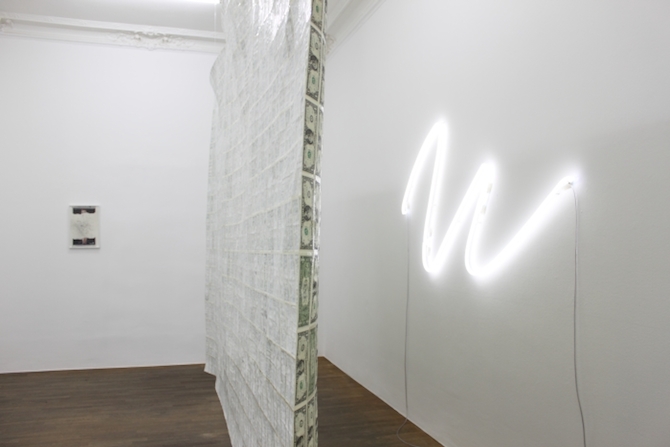
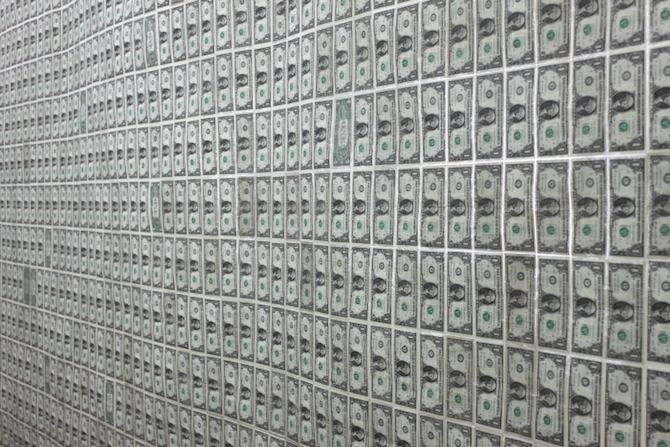 all works by Nadine Fecht / Courtesy and Copyright Nadine Fecht
all works by Nadine Fecht / Courtesy and Copyright Nadine Fecht
A couple of years ago, just having graduated from the Berlin University of the Arts as a Meisterschülerin of Stan Douglas and Lothar Baumgarten, Nadine Fecht already proofed that she knows how to play with expectations, disappointment and experience. Her work “53 beginnings” which references John Cage, features 53 beginnings of different vinyl records compiled on one single vinyl pressing. It gathers the pops and crackling right before the first song starts from 53 different sources, the seconds before the first sound appears; the nondescript segment the tone arm needs to cover until it reaches the actual content of the vinyl.
Nadine Fecht's art is based on “The Practice of Drawing” – which is also the title of a group show she is currently participating in with her work “noise” (2014) at Gallery 5020 in Salzburg, Austria. In the first part of her solo show „adopt a revolution“ at FELDBUSCHWIESNER in Berlin, shown in July and August, she stroke a rather political note. Also her contribution to the exhibition „Money Works Pt. 2“ at the Haus am Lützowplatz – opening on August 29 – has a political implication. It was about time to talk to the Berlin-based artist.
Jürgen Dehm: For your show “adopt a revolution” at FELDBUSCHWIESNER you spray painted the graffiti „you are here“ on the huge cover sheet which hangs right across the whole wall opposite to the gallery’s entrance. Did you want the visitor to be aware of his position or to take up a position?
Nadine Fecht: For quite a while I have been dealing with what might happen if I do confront the visitor of a space with large-scale works that force her/him to take up a certain position just to be able to become acquainted with them. With “you are here” I enhanced this initial moment of having to take a stand. In the context of the exhibition and its title, it was certainly not just an invitation to be become aware of one’s geographical localisation but most of all to become aware of one’s attitude. In particular in times of change, the position is similar to the attitude – there is no escape! And this applies to everybody: Where you stand is where you are, and that is just here. This is also meant in an existential way: Being here refers to existing, as a human being, in a basically uncertain and insecure position in the world. Taking up a position always starts with needing a direction; regardless if you are aware of it or not, if you choose this direction or if you let it be chosen it for you.
Jürgen: You included current political and economical icons in certain works of this exhibition: Edward Snowden, a can of Red Bull or – in a central position – a curtain made out of dollar bills. You draw on those icons, but the works themselves stay indifferent, they don’t point to a certain political tendency. In which direction is your revolution meant to go?
Nadine: The exhibition was based on a conceptual approach, arranged to spread all over the three spaces at FELDBUSCHWIESNER. The works shown operated – just like my earlier ones – on a rather structural level. The titles of them like "you are here", "subjectivity as a material to trade" and "Lager (camp;stock)" – just like the materials and images I used to create them – constitute specific points of reference. Both materials and titles are meant to draw on politics and economics. Everything I used in this exhibition had been used before somewhere else in the world and had a significantly different function there; and I also wanted to reference to this function! By using these materials for my purposes in my works, their old function, their original meaning becomes part of the new. Regarding the curtain made out of 1$ bills it is essential that I did not use brand-new notes, but those which had already been circulating because of their monetary value. I manipulated every single one of 1$ bills – which perhaps represent the smallest common denominator of the international foreign exchange trade – with white hatching. These hatchings cover the whole “field of money” in the final piece. Money is something liquid, something that can move things. But at the same time it is something that wants to be moved. This is what I want to make visible by deducting these dollar bills from circulation and appropriating them at the same time through the act of hatching.
And what you call ‘indifferent’ I would rather call ‘open’. At first glance it might appear that my works in that show withdraw themselves from questioning the standpoint. But I think that only this alleged indecisiveness has the potential to provoke a real process of involvement. To decide upon such a form of involvement – both as creator and spectator – already equates with taking a standpoint or revealing an attitude. An attitude without which any change for something better would not be possible.
Jürgen: And what about the folded furniture pads that you placed in the back of the exhibition space? Are they meant as obstacles or barriers?
And what you call ‘indifferent’ I would rather call ‘open’. At first glance it might appear that my works in that show withdraw themselves from questioning the standpoint. But I think that only this alleged indecisiveness has the potential to provoke a real process of involvement. To decide upon such a form of involvement – both as creator and spectator – already equates with taking a standpoint or revealing an attitude. An attitude without which any change for something better would not be possible.
Jürgen: And what about the folded furniture pads that you placed in the back of the exhibition space? Are they meant as obstacles or barriers?
Nadine: (laughs) Actually, the furniture pads had a very specific function within the exhibition display. By calling the works in the last space „Lager“ I intended to point at the moment of silence, the pause in between, which is also part of change and departure. In contrast to the spaces in the front the space in the back was more silent. The works there, as they were placed lying on the floor, were much more vulnerable. The situation that forced visitors to step on the furniture pads to be able to have a closer look at the collages was, of course, arranged on purpose. Some did not even notice that it was “the art” they were stepping on – but that is part of the game. On the other hand there were visitors not only asking themselves “Am I allowed to step on it?” but furthermore they also observing and recognising: “This person stepped on it.” Of course, all of this did not cause a big bang, but neither were the reactions silent or hardly perceptible. The question where art starts and where it ends is still of interest…
Jürgen: A major part of the works of the FELDBUSCHWIESER exhibition were collages. I have known you first and foremost as an artist who focuses on drawing. How important is ‘the practice of drawing’ for you in general?
Jürgen: A major part of the works of the FELDBUSCHWIESER exhibition were collages. I have known you first and foremost as an artist who focuses on drawing. How important is ‘the practice of drawing’ for you in general?
Nadine: The subtitle of the exhibition was „unfamiliar gestures”, which can also implicate some kind of refusal, via an approach that examines to which degree an author can be able to withdraw herself/himself from the medium of drawing. To stress that approach I chose several ways: At one point I used nearly 2000 biros – as one single uncontrollable “drawing” pencil. Then I “adopted” gestic lines from other sources. Both strategies were used to establish distance, to remove myself from the final result. This does of course challenge the traditional romanticised concept of drawing. I wanted to maintain the direct and intuitive nature of drawing, and wanted to get rid of everything that is connected to those terms ideologically at the same time! Collage for me is here just one medium among many others. At the moment I personally find it to be the most accessible.
Jürgen: This relation of sign and signifier from a linguistic point of view seems to play an important role in your work in general. I also find it to be a central subject in one of your earlier works in another medium; the video “close reading” from 2013.
Nadine: "close reading" deals with words that complex phenomenon or concepts were subsumed under and hence entered different languages as neologisms, like “burnout” or “leitmotif”. By letting four consecutive speakers spontaneously explain terms like these, which have entered their native language as foreign words, I would like to stress two effects: on one hand the connection between language and speaker and on the other the aspect of motion which language is constantly subjected to. In this work once more the choice and order of the terms point to a political and economic reality of which language always is an essential part. And also the factor of drawing as an appropriation of foreign gestures can be found in this work: Only a transcript of each speaker’s explanation is visible in the projection, four lines simultaneously, like four subtitles displayed at the same time.
Jürgen: Will your contribution to „Money Works Pt. 2“, opening at the Haus am Lützowplatz on August 29th, be part of the revolution?
Jürgen: Will your contribution to „Money Works Pt. 2“, opening at the Haus am Lützowplatz on August 29th, be part of the revolution?
Nadine: My work “surplus”, my contribution to this exhibition, addresses the concept of value in a very literal way. It consists of found, scuffed price tags. A product’s price tag formally denoting the attributed value becomes totally obsolete after purchase. Probably the first thing people generally do is to get rid of it. I collect these tags in the streets and combine them with all their individual wear and tear into a regular grid. Voilà, here is the surplus!
Artist's website: nadinefecht.com
NADINE FECHT: PART TWO
FELDBUSCHWIESNER, BERLIN
AUG 07 - 30, 2014
DELTA-BEBEN. REGIONALE 2014
NADINE FECHT et al.
WILHELM-HACK-MUSEUM / KUNSTVEREIN LUDWIGSHAFEN
JUL 19 - AUG 31, 2014
DIE TÄTIGKEIT DES ZEICHNENS
NADINE FECHT et al.
GALERIE 5020, Salzburg
JUL 17 - SEP 27, 2014
MONEY WORKS
NADINE FECHT et al.
HAUS AM LÜTZOWPLATZ, Berlin
AUG 30 - OCT 12, 2014
OPENING: AUG 29, 2014
SCHERE, STEIN, PAPIER
NADINE FECHT et al.
COLLECTIVA GALLERY, Berlin
JUL 04 - AUG 28, 2014
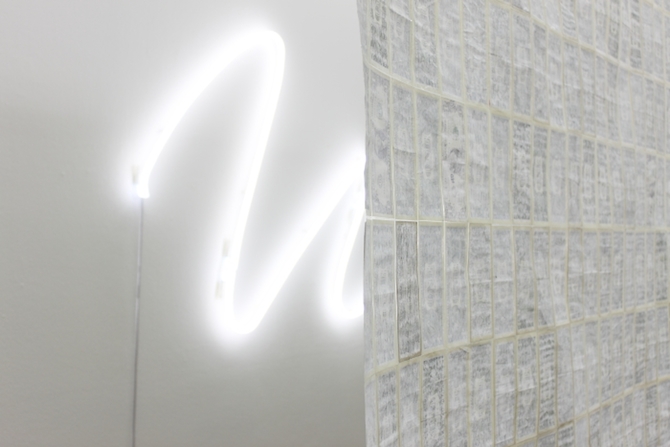
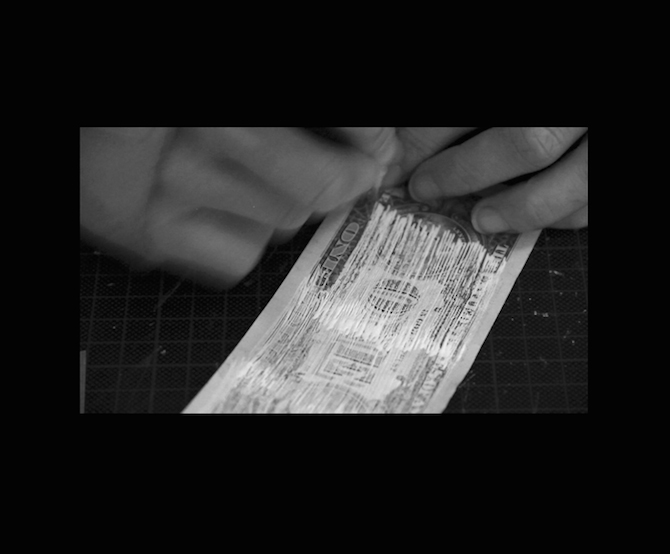
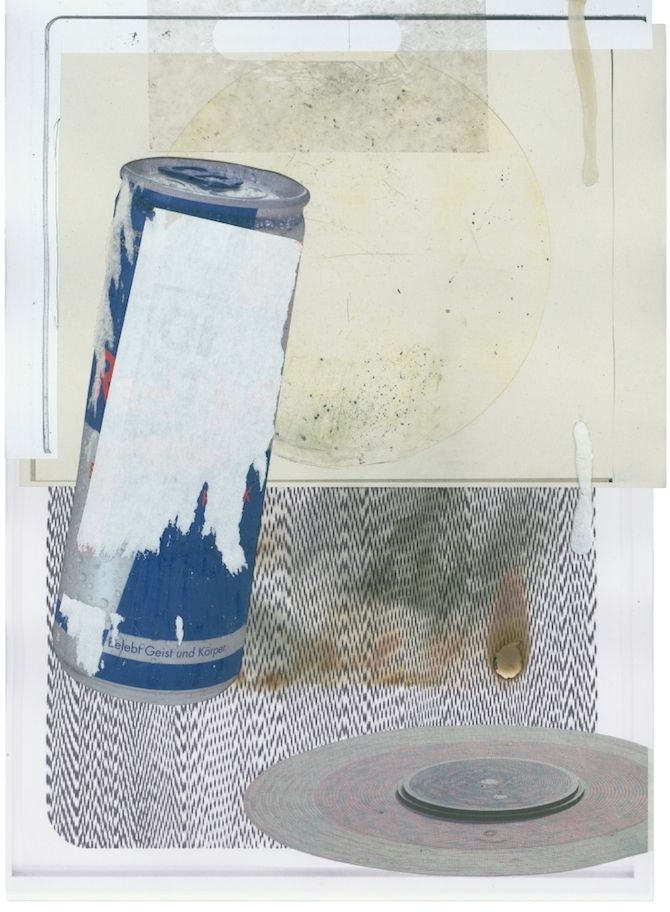
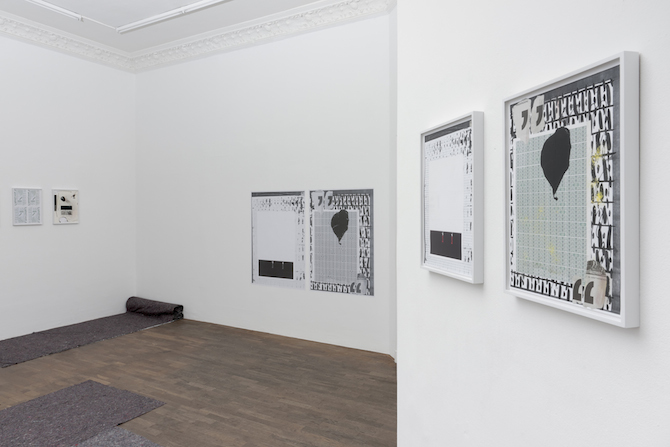
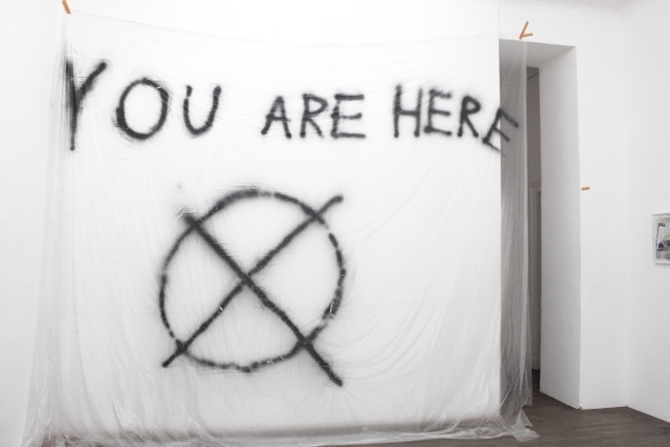
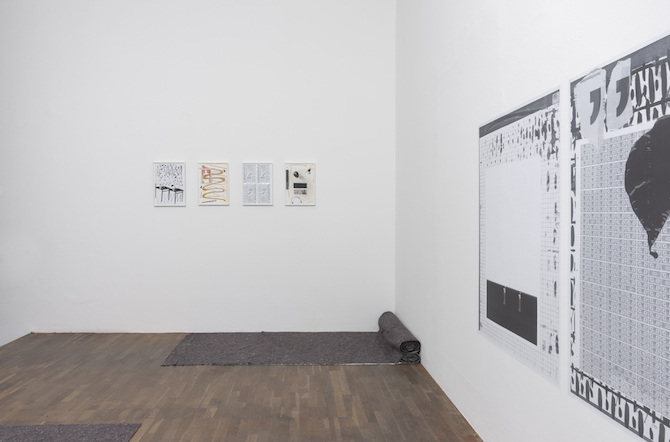
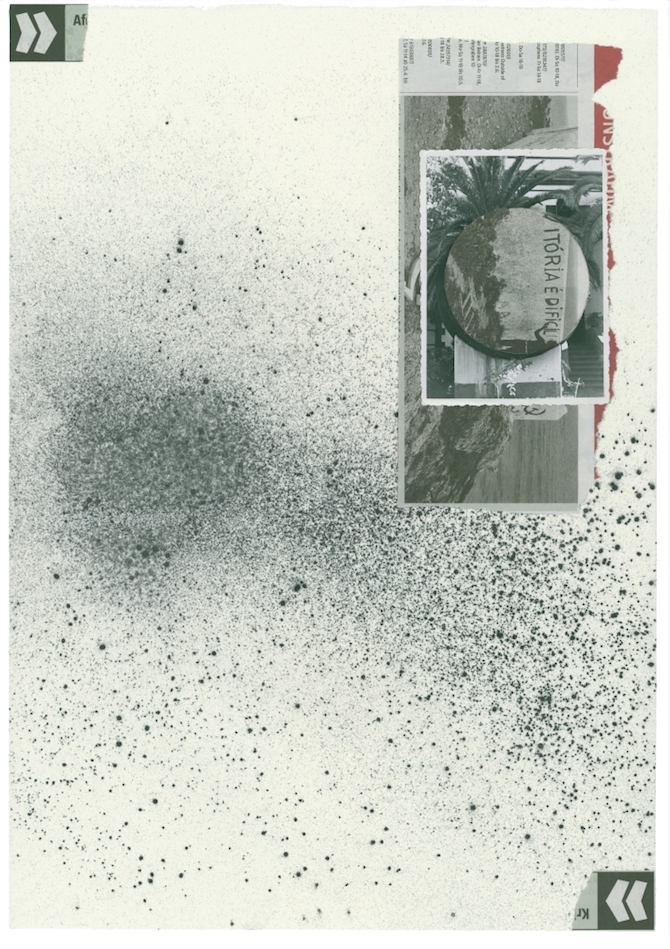
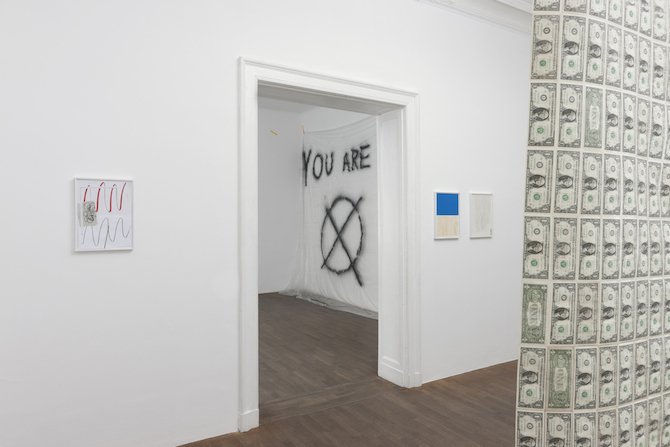
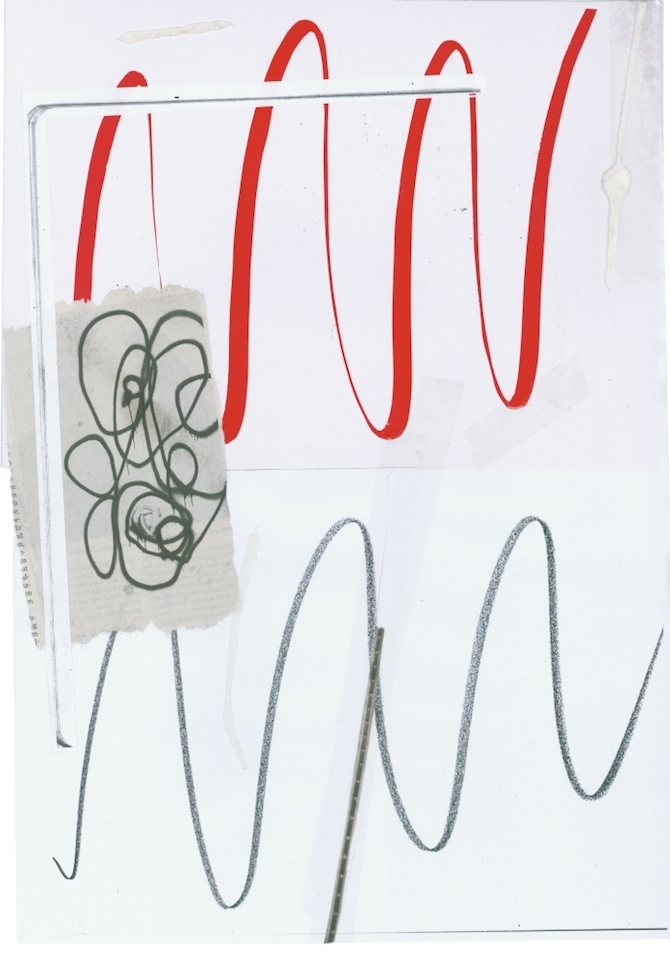
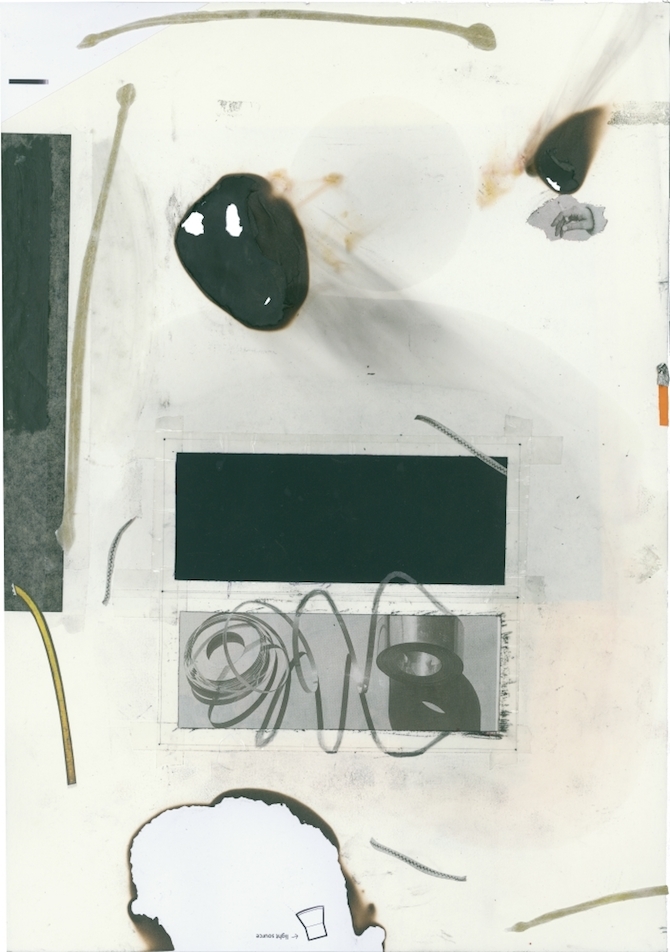
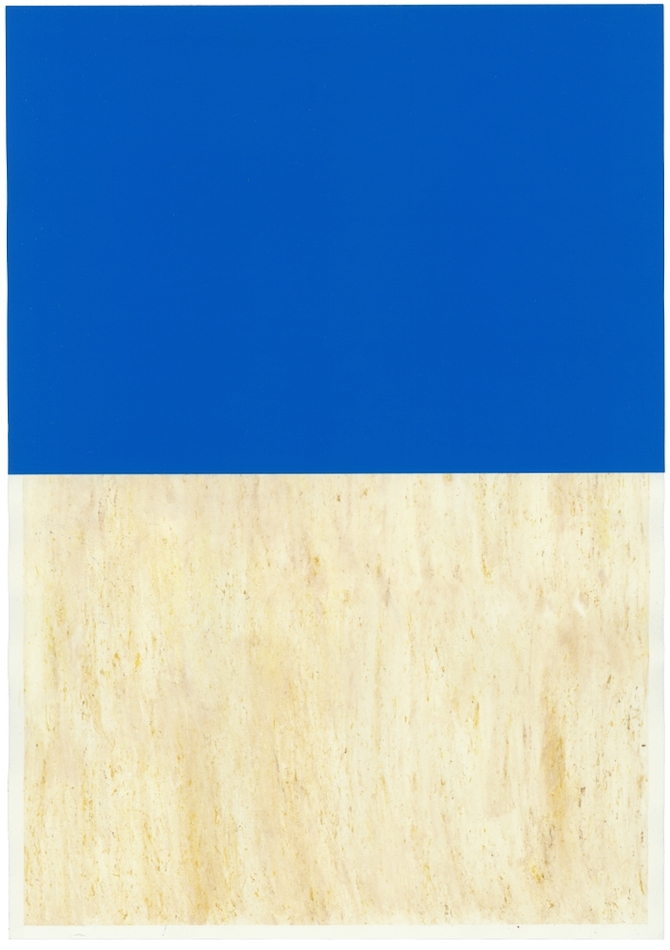
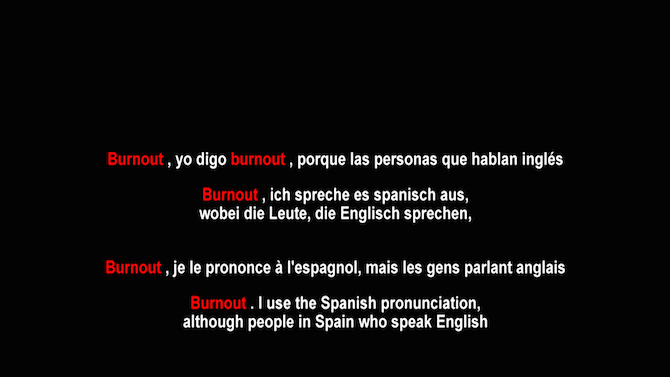 all works by Nadine Fecht / image 4,6,8 photographed by Markus Schneider / Courtesy and Copyright Nadine Fecht
all works by Nadine Fecht / image 4,6,8 photographed by Markus Schneider / Courtesy and Copyright Nadine Fecht